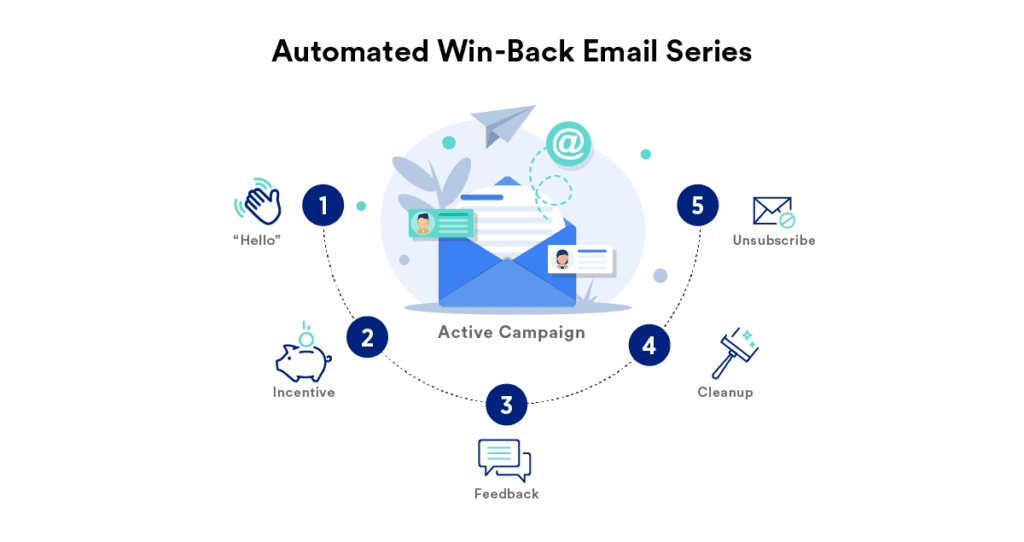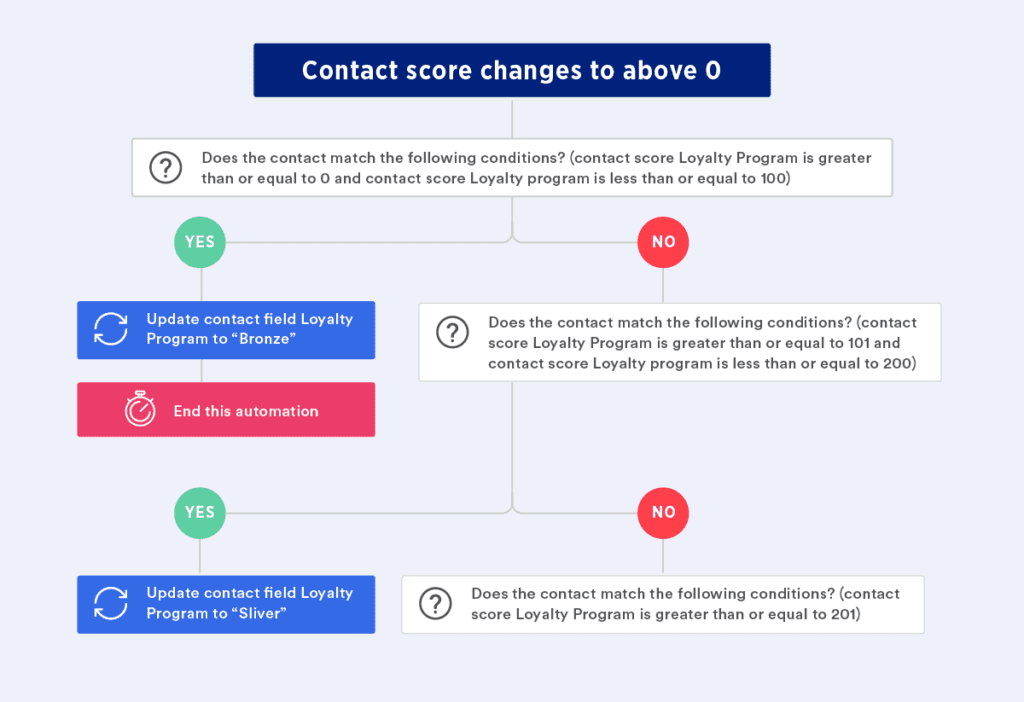13 eCommerce Marketing Automation Strategies to Grow Your Business
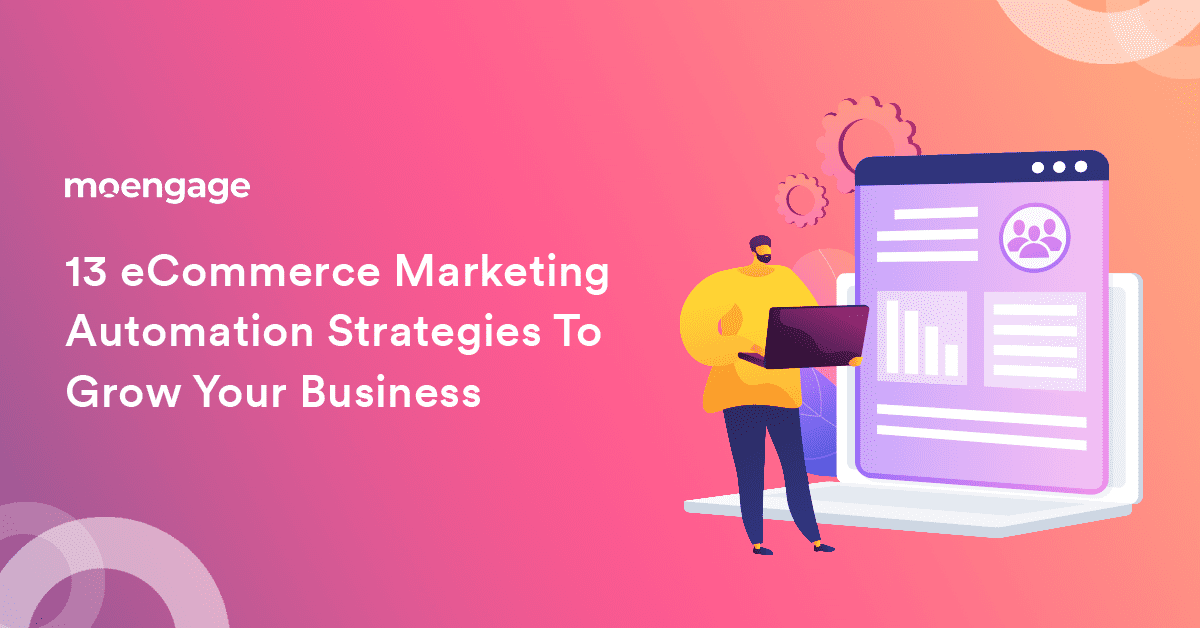
As a growth manager or marketing strategist, it is likely that you don several hats and perhaps need more helping hands to manage the expectations of an evolving user base efficiently. From managing marketing campaigns and SEO to optimizing your digital content, you either need to hire several experts or invest in eCommerce marketing automation to drive results without burning out.
This post will introduce you to some key benefits of combining eCommerce with marketing automation, followed by 13 marketing automation strategies to hack your growth in 2021. Let’s dive in.
Top Benefits of Implementing eCommerce Marketing Automation
Marketing automation refers to using software or web-based services to plan, implement, manage and automate repetitive marketing tasks across multiple channels to save time, improve ROI, drive customer loyalty and optimize costs.
- Additionally, marketing automation can help you identify new revenue streams and cross-selling and upselling opportunities for your eCommerce store. Think about it – what’s your primary goal as an eCommerce business owner or marketer? To grow revenue and sales, right? Well, there are several ways of increasing your revenue, including customer acquisition, customer retention, and optimizing the average order value. Marketing automation can help you score on all three fronts without any manual effort. As you already know, acquiring new customers is much more expensive than retaining existing ones.
- With automation software, you can set triggered email campaigns to send relevant information to users when they take specific actions.
- You may even set up email campaigns to win back customers or send regular cart reminders to nudge them into completing a purchase gently.
- To increase the average order value, you may employ A/B testing to determine the effect of a price change on different customer segments.
- Another idea is to upsell and cross-sell through automatic product suggestions on various pages or offering bundled packages based on user behavior and analytics.
- Additionally, marketing automation software can be used for growing your subscriber lists. For instance, you can set up landing pages that act as lead magnets to grow your lists.
- Also, while you cannot stay in touch manually with all the new subscribers, you can always set up an automated email campaign to stay connected with people who have shown some interest in your brand.
- Automated marketing can also drive significant results for mobile-first brands, and you can find out how in this insightful article.
Actionable eCommerce Marketing Ideas
There are several benefits of automating your eCommerce marketing operations, but where do you start? Here are some proven ideas to drive measurable results.
Strategy #1: Use Dynamic Content To Engage Customers
Dynamic content refers to customizing your content for visitors. With dynamic content, the content and images on your pages adapt to users’ in-session behavior, demographic data, and characteristics. This offers two benefits. First, presenting relevant offers helps in decreasing bounce and increasing conversions. Second, it allows you to create personalized experiences.
If you are looking for an example, think about the last time you logged into your Amazon account. Did you notice a tab that gave you several product recommendations based on your search history or purchase pattern? Amazon even suggests bundled products curated as per the browsing behavior of millions of its customers.
Adda247, an educational tech company, employed dynamic messaging to retarget users and improved its conversion rate by 35%. Faced with a high level of user abandonment, the company utilized MoEngage’s platform to personalize their messaging based on product description and past shopping behavior, leading to a 27% increase in CTRs, higher engagement, and more conversions. You can download the full case study to find out how MoEngage transformed Adda247’s marketing strategy.
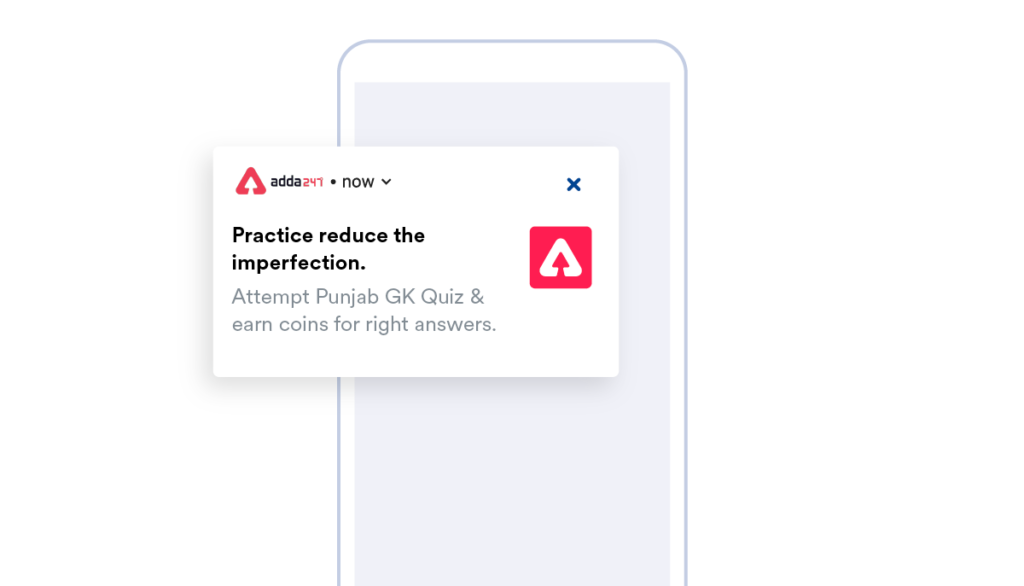 |
Strategy #2: Recover Revenue With Abandoned Cart Emails and Automation
It is a sad fact that approximately 70% of shoppers abandon their carts online. In revenue terms, abandoned carts cause eCommerce businesses to lose a staggering $18 billion annually, says Forrester Research. But what if you could turn around the situation and convert your abandoned carts into opportunities?
Well, just because someone didn’t complete a purchase doesn’t mean they don’t want to buy what’s in their cart. There could be hundreds of reasons why someone didn’t complete a purchase, including a faulty Wi-Fi connection, as Adidas points out, or non-availability of preferred payment options, etc.

Source – Really Good Emails |
Adidas also doesn’t stop at just one email but sends four abandoned cart emails over a month. You can follow a similar strategy to increase your order rate by sending a series of abandoned cart emails that provide customers with the option of picking up their purchase where they left and alternate payment options to speed up the process.
Strategy #3: Win Back Users With Targeted Email Campaigns
Have you not seen a customer of yours for a while? Touch base with them through a win-back email campaign and let them know how much you missed them.
It is possible to set triggered email campaigns for users that haven’t been active for ‘X’ number of days to re-engage them. However, make sure to use a strong subject line for better open rates and match it with actionable content for adequate click-throughs. You may even add an incentive for subscribers to revisit your eCommerce stores, such as reduced membership fees or discount offers.
You can also consider setting up a sequence of win-back emails (as seen in the image below) to get the attention of your subscribers at regular intervals.
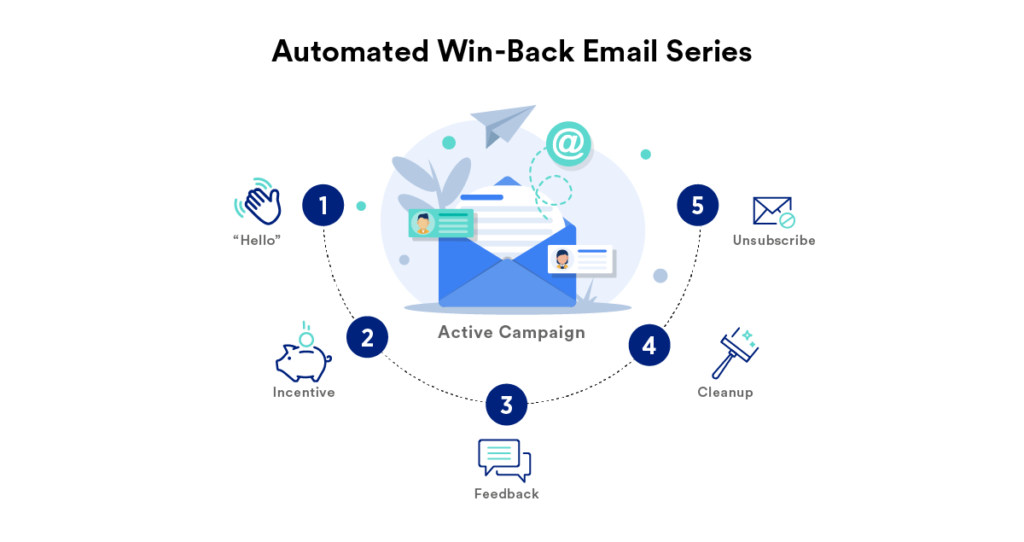
Strategy #4: Re-engage Old Leads Using eCommerce Automation
eCommerce marketing automation helps you re-engage with old leads that had shown interest in your product or service in the past but lost touch due to some reason. What if you could reach out to them with new content and offers to boost your sales?
For instance, you may identify old leads from past conversations and send them promotional coupons with dynamic expiration dates so that they don’t miss out on the promotion, even if they see your email on a later day. With a dynamic expiration date – say five days from opening the email – every coupon will expire on a different date, and this can be easily automated without any manual effort from your end.
Strategy #5: Use Chatbots for Customer Service
Customer service is a focal area for most eCommerce businesses and requires you to employ dedicated resources to tend to your customers 24/7. This translates into a significant amount of revenue for any business, which can be optimized with the introduction of chatbots in the front line of your customer service.
But that’s not all. You can also use chatbots in retail and give your shoppers a highly personalized experience. One popular and highly successful example is the Nike StyleBot that helps customers style their shoes and browse previously uploaded designs for inspiration. Shoppers can interact with Nike StyleBot on Facebook Messenger to mix and match, create their designs and share them with friends – making the whole experience a lot more fun.

Source – Product Hunt |
Aerie, a clothing and lingerie platform, uses a chatbot via Kik messenger to assist users while they shop on the site. The chatbot offers users a ‘this’ or ‘that’ option, and users must pick the image of the style they prefer to get tailored shopping recommendations. After a few rounds of personalization, the chatbot is mostly able to offer users a perfectly stylized collection.
Bonus Tip: Take a look at Pros and Cons of AI Chatbots
Strategy #6: Create Personalized Landing Pages With eCommerce Automation
It has become easier with eCommerce automation than ever before to connect with your customers by using dynamically generated personalized content based on their demographic data and browsing behavior. For example, if a user is searching for shoes, it makes sense that your landing page gives prominence to shoes over other items to hold the user’s interest and attention. To achieve this, you can use your marketing automation software to create segmented lists and build landing pages targeted to each segment for higher relevancy and conversions.
Strategy #7: Use Segmentation to Make More Sales
Segmenting your subscribers helps you get more sales by offering people what they already want. You can segment your contacts to make lists based on various common factors like location, average order value, engagement level, age, profession, etc.
For instance, if you have two different types of newsletters for subscribers based on their interests, you’d have to create two different lists of contacts in your marketing automation software to send the right message to the right people. In fact, there are several levels of segmentation you can achieve via lists, tags, and custom fields to make your messages highly targeted and relevant for users.
Download this case study about a global firm, Tathastu, that implemented our unified email marketing platform to better understand user behavior for building segmented lists to increase monthly active users.
Gaana, an online music streaming service, used our advanced segmentation and personalized engagement channels to deliver an unparalleled listening experience to users. Personalized push notifications resulted in a 120% uplift in subscriptions for premium accounts driven up to 10% DAU (Daily Active Users) on the app.
Strategy #8: Use Lead Scoring for Higher Conversion Rates
A marketing automation software that offers lead scoring can help you boost conversions by automatically sending personalized content to prospects depending on their position in the sales funnel.
Lead scoring can also be used for pre-qualifying leads before passing them onto your sales team by assigning a score to every lead based on their actions on your website and other predetermined factors.
Cold leads or those with low scores can be segmented further and nurtured with personalized content before passing them on to the sales team. For instance, as soon as a subscriber shows interest in buying from your eCommerce store, you may automatically enter them into a drip campaign to slowly nudge them into completing the purchase.
You may set the following types of automated email campaigns to nurture your leads and drive customer loyalty as well:
- An automated welcome email series for effective onboarding
- Follow-up emails to remain in touch with new leads on certain predetermined milestones
- Offer emails to encourage purchase
- Review requests for feedback and user-generated-content
- Abandoned cart emails to recover lost revenue
- Emails celebrating milestones and personal events
Strategy #9: Automate the Checkout Process and Increase Sales
A complicated checkout process can deter customers from completing their purchase, but you can prevent a large percentage of abandoned carts by creating a smooth and trustworthy checkout process. With automation, you can fill in user details automatically and display preferred payment options on top to make it as convenient as possible for users to complete a purchase. Also, you may add a live chat option on the checkout page for swiftly answering user queries during the buying process.
 |
Strategy #10: A/B Test Your Landing Pages
A/B testing refers to simultaneously testing two or more variants of a page to see which one performs the best. With your marketing automation software, you can quickly run such tests between your product pages and landing pages to make informed decisions regarding the digital assets you will use.
Some of the elements you may consider split testing are:
Headlines
- Compare a longer versus shorter headline
- Ask a question in your headline
- Use a testimonial in your headline
- Try positive and negative emotions
Call-to-Actions
- Compare the use of words like free, 100%, bonus, etc.
- Try different color combinations
- Placement of text
Banner Image
- Placement
- Color scheme
- Text on display
Strategy #11: Invest in an Automated Social Listening Tool
With an automated social listening tool, you can monitor customer conversations around phrases, keywords, hashtags, and industry-specific terms. This will give you a holistic view of how people talk about your brand and what they expect from it. Some social listening tools are also equipped to run sentiment analysis on captured data to give you actionable business insights.
Strategy #12: Automate Reviews on Your Website
Gathering customer feedback and acting on it is crucial to your business’ success. However, manual collection of reviews can be a tedious job. Instead, you can set up trigger emails that are automatically sent to users a few days after product delivery to ask for feedback. You may even use website push notifications or in-app prompts to gather feedback and reviews for your products.
Strategy #13: Reward Loyal Customers With Special Discounts and Offers
Loyal customers buy more. With eCommerce marketing automation, you can segment your best customers and reward them for their shopping behavior to boost loyalty and subsequent sales.
You may use the following automation to identify whom to send your offers and loyalty programs.
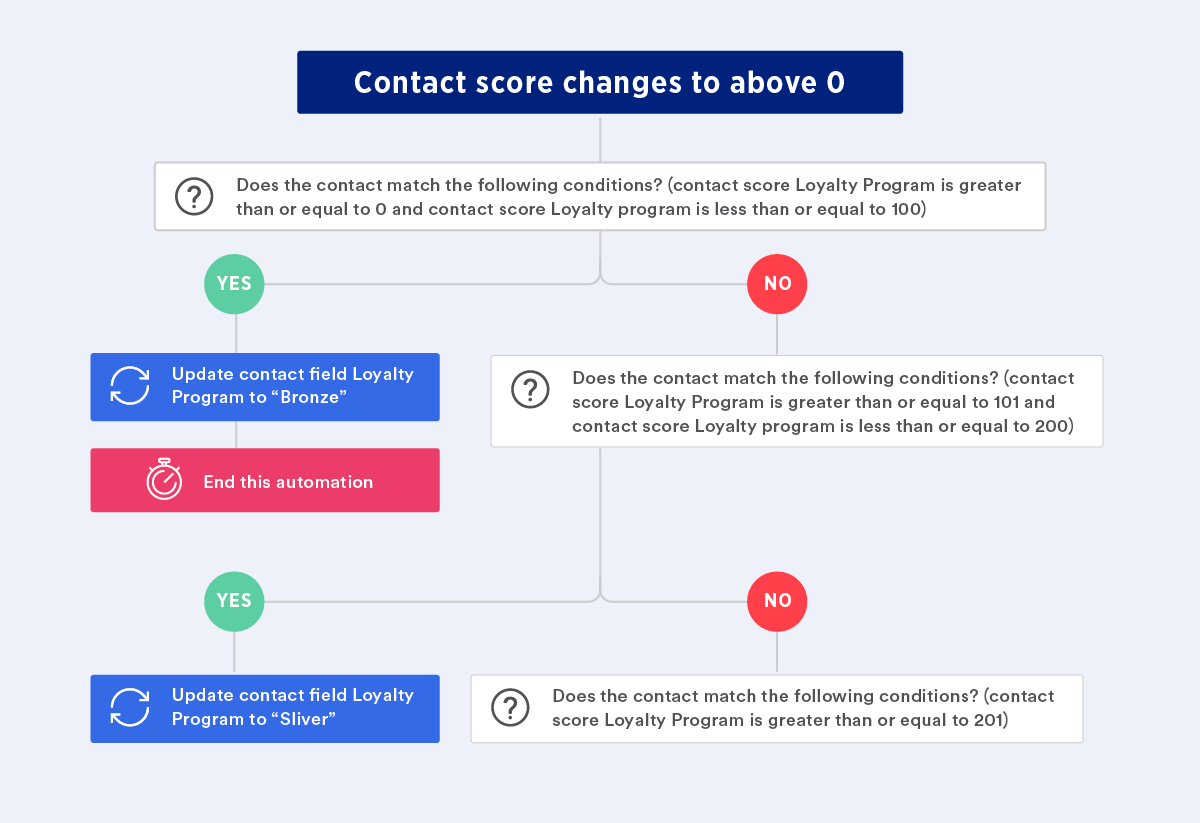 |
An automation program can also be set to convert first-time shoppers into repeat customers by automatically rewarding them with a special discount or promotion via email. Offering users a coupon or discount code that applies to their second purchase is an excellent way of getting them to come back.
As you’d agree, customers who buy the second time are even more likely to return for the third time. Incentivizing subsequent purchases through carefully crafted reward programs is an excellent way of building loyalty and promoting sales.
For example, you may run a point-based system that offers reward points for every purchase that can be redeemed on the site for discounts or other goodies like Tattly does.

Source – Really Good Emails |
Offering a discount for repeat purchases is another option like Amazon’s “Subscribe and Save” discounts on various regular use items.
The Wrap: Getting Started With eCommerce Marketing Automation
Now that you know how eCommerce marketing automation can help you grow in 2021, you might be wondering how to get started? The simplest way is to invest in a unified automated marketing platform that lets you set up personalized and targeted email marketing campaigns.
Besides ease of use and seamless third-party integrations, it helps if your eCommerce marketing software comes with pre-built templates for landing pages and drag and drop functionality in page builder. Additionally, automated product pages and the ability to set up custom marketing automation workflows will further ease your burden.
Once you identify a platform, start by using your software to segment your subscribers into various lists based on their browsing behavior, purchase history, demographics, etc. Such segmentation will help you personalize your content according to the user, resulting in higher engagement and user satisfaction. Also, read these automation best practices before you go ahead with your first automated marketing campaign to avoid common pitfalls.







